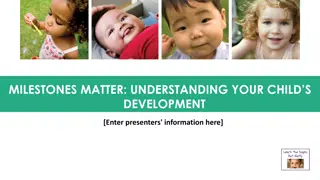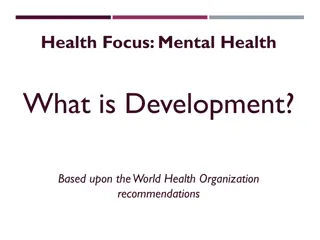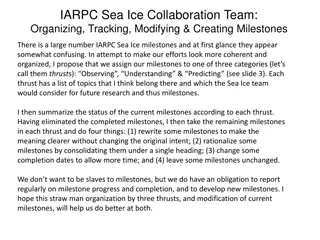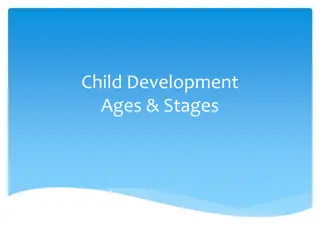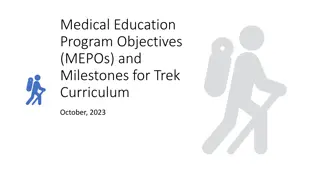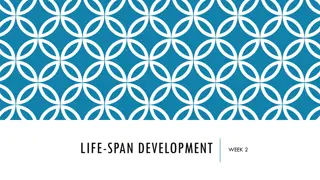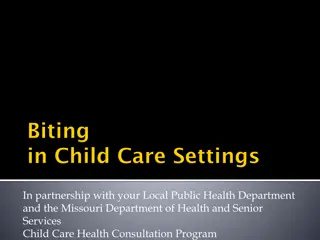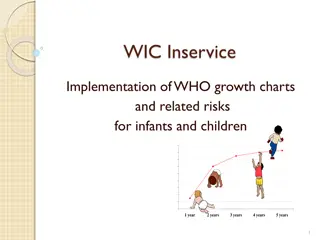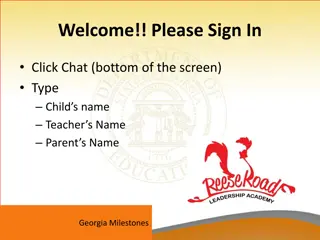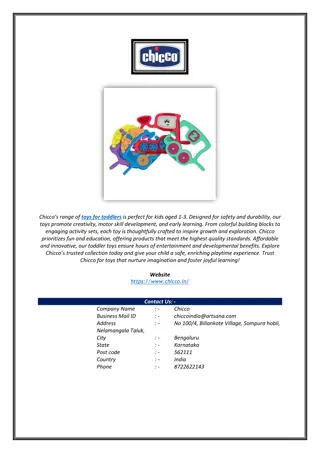Growth & Development of Toddlers (1-3 years): Characteristics and Milestones
Toddlers aged 1-3 years experience physical, emotional, and psychosexual development. They exhibit characteristic features like protruded abdomen and play types such as parallel play. During this period, children learn to walk, talk, and express emotions, while also displaying separation anxiety. Understanding the milestones and changes in toddlers during this crucial age range is essential for parents and caregivers.
Download Presentation

Please find below an Image/Link to download the presentation.
The content on the website is provided AS IS for your information and personal use only. It may not be sold, licensed, or shared on other websites without obtaining consent from the author.If you encounter any issues during the download, it is possible that the publisher has removed the file from their server.
You are allowed to download the files provided on this website for personal or commercial use, subject to the condition that they are used lawfully. All files are the property of their respective owners.
The content on the website is provided AS IS for your information and personal use only. It may not be sold, licensed, or shared on other websites without obtaining consent from the author.
E N D
Presentation Transcript
Growth & Development of Toddler (1-3 years) Prepared by Dr. Kareem J. Dhaidan Kareem AL-Khafajy
Characteristic Toddlers are usually chubby, with relatively short legs and large head. The face appears small when compared to the skull, but as the toddler grows. These proportions gradually change to that of the adult size. During toddler years, chest circumference continues to increase in size and exceeds head circumference. By 2 years primary dentition of 16 teeth and 20 teeth by 30 months (2 1/2 years). Kareem AL-Khafajy
protruded abdomen: toddler appears pot- belled because of the immature abdominal musculature. Abdomen flattening results from development of abdominal muscles. Bow-legs typically persist along toddlerhood since they must bear the weight of the large trunk. Daytime control of bladder and bowel control by 24 - 30 months. Visual acuity of 6/6 is achieved during this period. Senses of smell, hearing, touch, and taste increasingly well developed. Accommodation well developed. Kareem AL-Khafajy
Physical Development Time of slowed growth and rapid development Learns to chew food with continued eruption of teeth Masters tasks such as walking, jumping, dressing, eating, use language to express needs Learns to stand alone and walk between 1 and 2 years Most toddlers say their first words and refine language skills By end of this period, may be toilet trained Kareem AL-Khafajy
Emotional Development Tolerates to some extent separation from parent, but he develops separation anxiety (anxiety develops when he is separated from the caregivers-mother). - Less fear of strangers (places and people) - Beginning to imitate parents. - Expresses emotions and has temper tantrums. - Beginning awareness of ownership (my-toy) Kareem AL-Khafajy
Types of Play Toddlers engage in can be described as: Parallel Play: The child sits with other children but does not cooperate or interact with them. Much of playtime is an imitation of a role model. The toddler does not share toys until the later of the toddler years. Kareem AL-Khafajy
Parallel Play Kareem AL-Khafajy
Psychosexual development -According to Freud age 1-3 years represent the anal phase of development which is characterized by: 1. Negativism 2. Emotions expressed very strongly 3. Temper tantrums Kareem AL-Khafajy
Psychosocial development working on the developmental task of autonomy versus shame and doubt 1- The favorite word of most toddlers is NO . just saying the word seems to command the attention of those around themselves. 2- When the central development task is autonomy versus sham& doubt (I can do it my self) increasing abilities to control their bodies themselves, and their environment Kareem AL-Khafajy
Health promotion 1- Immunizations 2- Injury prevention 3- Sleeping pattern Sleep Need: the child required from 12-14 hrs. at one years of age while, 10-12 hrs. at three years of age. Also need for snaps at morning and afternoon until 3years of age. Kareem AL-Khafajy
4- Nutrition requirement: need 100 kcal/kg/24hrs. A. They prefer to feed themselves, so they can be at risk of aspiration of small foods that are not easily chewed. B. Encourage self-feeding C. Do not push the child to eat D. Allow others to eat with the child E. Offer familiar foods 6. Provide fluids in small but frequent amounts Kareem AL-Khafajy
Common Health & Developmental Problems of the toddler 1. Separation anxiety. 2. Stressful reaction to hospitalization. 3. Fear. (Large animals, going to sleep, loud noises, loss of parents) 4. Ritualistic behaviors (the same rituals at time of bathing, eating, sleeping) 5. Dental caries. 6. Jealousy, boredom 7. Child abuse, 8. Tiredness, hunger, Kareem AL-Khafajy
9. Screeming, pitting and Trichotillomania, that also known as hair-pulling disorder (Aggressive behavior). 10. Accidents: a. Automobile accidents. b. Burns. c. Falls. d. Poisoning. (e.g. lead & Salicylate poisoning) 11. Infections: Otitis media and brain abscess because the Eustachian tube (From pharynx to middle ear is straight & shorter than the adult Kareem AL-Khafajy
Suggestions for Potty Training Use comfortable potty chair. Limit The time on chair. Learn child hand washing afterward to instill good hygiene habits. Use Pull-Up type clothes. Do not tease or shame the child Allow child to observe role model using toilet. Kareem AL-Khafajy




